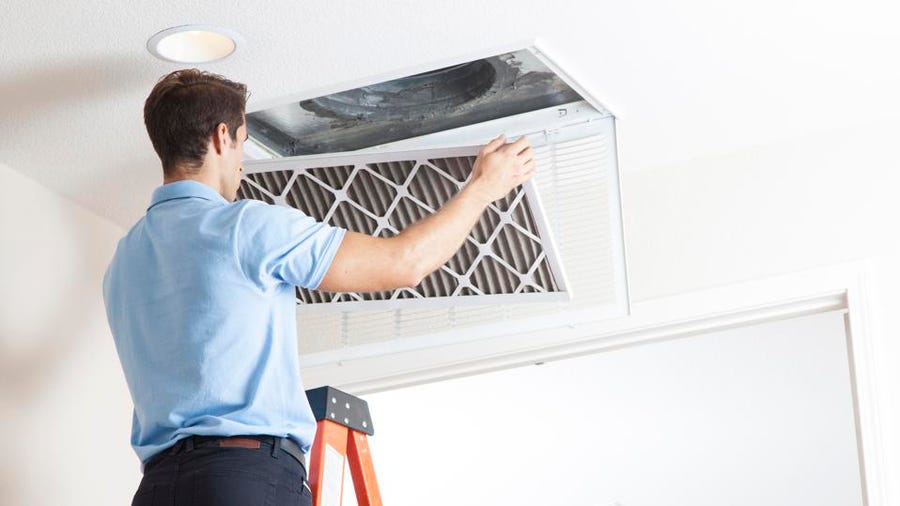The air duct is one of the most important parts of your HVAC system as it allows the free flow of air in and out of your home. The ductwork of a system that has been in operation over time will naturally wear out, leading to the separation of joints and other parts bonded together. Similarly, the system may be damaged, causing the adhesiveness connecting joints to wear off, which causes air to leak out.
The effects of air leaks can be extreme, and if this problem is not immediately resolved, it can lead to severe damages to both the quality of air and the condition of your HVAC system. If you are looking for Insulation Services, check Clean Air Doctors, who are professionals with a good track record in improving your air quality. This article will provide you with the needed steps to insulate your ductwork.
Importance Of Insulating Ductwork
Before we go on with the steps of insulating the ductwork, let’s first look at why it is important to ensure the ductwork is tightly sealed.
- Comfort – Having leaky ductwork will cause an imbalance in the air temperature in your home, making it uncomfortable to stay inside.
- Safety – It is important to ensure the leaks in the ductwork are tightly sealed to avoid the back drafting of gases into the living spaces causing terrible health side effects.
- Improve Air Quality – Openings in the ductwork will allow unfiltered air in the attic to penetrate the living area causing respiratory problems. To ensure that your household gets the best quality of air, ensure these leaks are sealed.
- Saves You Money – When there is a leak in your ductwork, particularly in the uncooled or unheated spaces, your energy consumption can skyrocket as your HVAC works extra hard to maintain the room to the right temperature.
- Protects The Environment – The U.S Department of Energy reports that sealed ductwork can save and improve energy efficiency up to 20 percent. Energy efficiency reduces the number of emissions that are generated to the environment; this, in turn, reduces your carbon footprint.
Steps To Insulate Ductwork
These are highly actionable tips that will enable you to effectively insulate your ductwork on your own.
Inspect Your Ductwork
The first step should always be to establish whether your ductwork requires any insulation or not. This can be done with the help of a professional who performs a test to establish if any part of the ductwork is leaking. If you choose to do it yourself, make sure you conduct a thorough inspection looking at the places where a joint may have separated.
If you detect any leaks, it is a good practice to check the blower motor’s speed and reduce its operating speed, which can be done by switching wires. This is important to ensure that the system does leak as much air during the repair.

Assemble Tools And Insulation Material
This step helps you establish all the things needed for your insulation job. Since you are doing it by yourself, having protective gear like gloves, a long-sleeved shirt, and a dust mask is essential. Have a utility knife that will help you cut through the tape and a paintbrush for applying the duct mastic to the joints. Finally, ensure you have the duct mastic and any adhesive material you will need for this project.
Insulate The Ductwork
This should be a straightforward process, especially if the last step were followed to the letter. Find the parts of the ductwork where you noticed any leaks, and using the utility knife, cut a piece of the metal tape that is heat approved and lasts longer compared to other duct tape material.
For leaks around the elbows joints, apply the duct mastic using the paintbrush you assembled, making sure that you have covered all the areas of the joint as well as the elbow interior lining. Join the two together if the HVAC is not working and tightly seal them using the metal tape.
If the leaks are in the unconditioned spaces, ensure you insulated the ductwork there together with any exposed water or electric plumbing. The best way to achieve effective insulation would be using an electric heater tape that heats the pipes during the winter season to prevent them from bursting.
Using the utility knife, cut the faced fiberglass insulation into sizable pieces and press it on the duct using strips of duct tape, ensuring they are safely applied. Follow through with long strips of duct tape along the duct while covering all the areas that may be easily susceptible to leakages.
The process of insulating the ductwork can be overwhelming especially if you are not used to technical labor. We advise getting a certified contractor that will provide a professional insulation job that will guarantee maximum performance.






